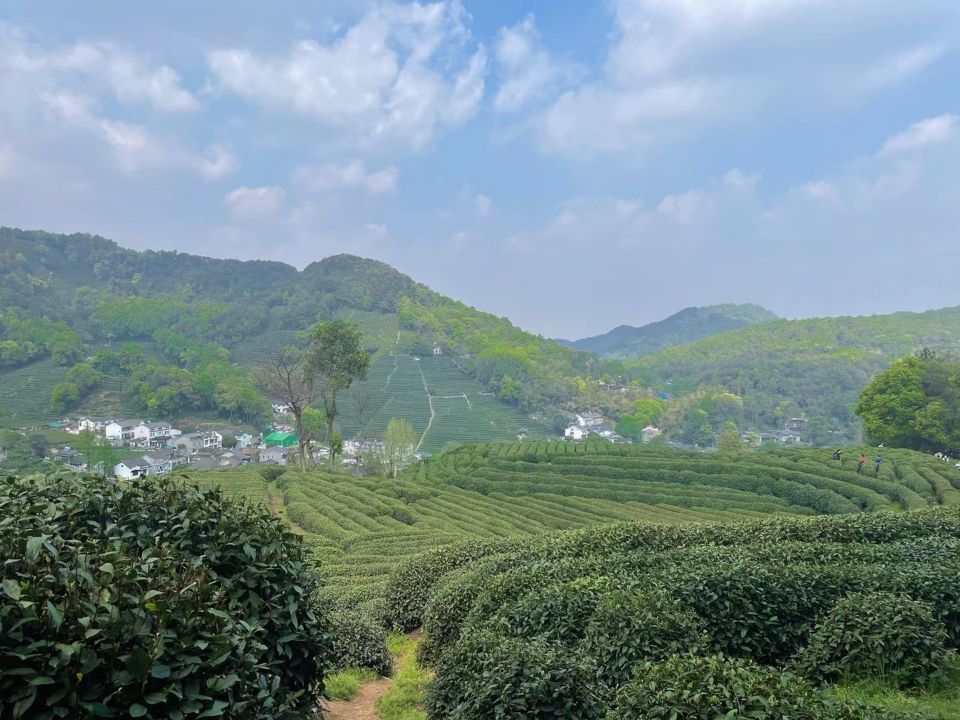 PDF(9737 KB)
PDF(9737 KB)


Spatial and temporal evolution of landscape ecological health in Naolihe Basin
SONG Shuang, XU Dawei, SHI Mengxi, HU Shanshan
JOURNAL OF NANJING FORESTRY UNIVERSITY ›› 2021, Vol. 45 ›› Issue (2) : 177-186.
 PDF(9737 KB)
PDF(9737 KB)
 PDF(9737 KB)
PDF(9737 KB)
Spatial and temporal evolution of landscape ecological health in Naolihe Basin
 ,
,
【Objective】This study aimed to reveal the temporal and spatial evolution characteristics of watershed landscape ecological health, clarify its spatial differentiation and clustering, and provide targeted suggestions and theoretical references for the conservation and sustainable development of watershed landscape ecological resources.【Method】Based on landscape ecological structure, process and function, this study constructed a landscape ecological health evaluation index system. The mixed model of analytic hierarchy process (AHP) and entropy weight method (EWM) were used to determine the index weight. Weighted overlay analysis, health rank transfer matrix, and exploratory spatial data analysis (ESDA), using ArcGIS 10.7 and GeoDa 1.14 platforms, were used to study the temporal and spatial evolution of ecological health and spatial correlations in the landscape of the Naolihe Basin in 2010 and 2018.【Result】Research shows that from 2010 to 2018, the Naolihe Basin landscape ecological comprehensive health index average dropped from 0.67 (level Ⅳ, sub-healthy) to 0.59 (level Ⅲ, moderately healthy). The transformation of landscape ecological health level was dominated by the transformation of adjacent levels. Among the transformation types, the stable type accounted for the largest proportion, whereas the improved type accounted for the smallest proportion. Compared with the improved type, the degraded type was 9.69% larger in proportion and 2 184.67 km2 larger in area, with only minor improvements in the northern part of Baoqing County, the majority of Jixian County, and the northeastern part of Youyi County. In 2010, the ecological health of the basin landscape showed strong spatial agglomeration, which was weakened in 2018, and spatial autocorrelation analysis showed the spatial location and scope of spatial differentiation and aggregation characteristics of landscape health in the basin from 2010 to 2018.【Conclusion】The spatial distribution of the landscape ecological health index in the Naolihe Basin was generally high in the east and low in the west during both periods, and the study area as a whole showed a pattern of improvement in the west and degradation in the east and southwest. According to the different spatial autocorrelation transfer types of landscape ecological health in the study area from 2010 to 2018, targeted landscape ecological planning suggestions were proposed, including ecological land protection, soil and water conservation, land development and building land control, ecological restoration projects, green space and landscape pattern optimization construction.

landscape ecological health / spatial autocorrelation / evaluation system / Naolihe Basin
| [1] |
曹宇, 哈斯巴根, 宋冬梅. 景观健康概念、特征及其评价[J]. 应用生态学报, 2002,13(11):1511-1515.
|
| [2] |
谢春华. 北京密云水库集水区森林景观生态健康研究[D]. 北京:北京林业大学, 2005.
|
| [3] |
|
| [4] |
李春晖, 崔嵬, 庞爱萍, 等. 流域生态健康评价理论与方法研究进展[J]. 地理科学进展, 2008,27(1):9-17.
|
| [5] |
郑文裕. 哈尔滨公园景观健康评价体系构建[D]. 哈尔滨:东北林业大学, 2016.
|
| [6] |
疏良仁, 林剑. 生态系统健康理念在旅游规划中的应用——以北海涠洲岛旅游度假区为例[J]. 规划师, 2004,20(11):67-70.
|
| [7] |
林明太, 余建辉, 黄俊超, 等. 旅游型海岛景观生态健康评价[J]. 生态学杂志, 2012,31(7):1846-1854.
|
| [8] |
常守志. 基于生态流的城市景观生态变化与优化研究[D]. 长春:吉林大学, 2019.
|
| [9] |
|
| [10] |
|
| [11] |
孙才志, 陈富强. 鸭绿江口滨海湿地景观生态健康评价[J]. 湿地科学, 2017,15(1):40-46.
|
| [12] |
赵衡, 闫旭, 王富强, 等. 基于PSR模型的三门峡库区湿地生态系统健康评价[J]. 水资源保护, 2020,36(4):21-25.
|
| [13] |
谈娟娟, 董增川, 方庆, 等. 滦河流域景观生态健康演变及驱动力分析[J]. 中国农村水利水电, 2015(9):47-51.
|
| [14] |
张弘强, 罗春雨, 崔玲, 等. 2011—2016年挠力河流域生长季地表温度时空变化特征分析[J]. 国土与自然资源研究, 2018,(2):68-69.
|
| [15] |
宫兴龙, 杜树平, 付强, 等. 挠力河流域丘陵-平原-湿地区径流变化驱动力分析[J]. 农业工程学报, 2019,35(16):114-124.
|
| [16] |
刘曼红, 孟瑶, 曹晶晶, 等. 挠力河湿地大型底栖动物功能特性[J]. 东北林业大学学报, 2019,47(1):76-82.
|
| [17] |
潘健, 于丹丹, 何振芳, 等. 东平湖湿地景观演变对人类活动的响应机制[J]. 水资源保护, 2017,33(4):88-94.
|
| [18] |
陈正发, 史东梅, 何伟, 等. 1980—2015年云南坡耕地资源时空分布及演变特征分析[J]. 农业工程学报, 2019,35(15):256-265.
|
| [19] |
石小伟, 冯广京,
|
| [20] |
刘智丽, 岳德鹏, 杨慧, 等. 基于城市化进程的宜兴市景观演变与预测[J]. 南京林业大学学报(自然科学版), 2019,43(6):105-112.
|
| [21] |
雷金睿, 陈宗铸, 陈毅青, 等. 1990—2018年海南岛湿地景观生态安全格局演变[J]. 生态环境学报, 2020,29(2):293-302.
|
| [22] |
侯春兰, 杨瑞, 王勇, 等. 草海流域6种林分枯落物水源涵养功能研究[J]. 林业资源管理, 2020(1):108-115.
|
| [23] |
吴溪, 史文娇. 基于实测站点的区域森林水源涵养量空间化方法综述[J]. 生态与农村环境学报, 2019,35(12):1505-1515.
|
| [24] |
赵娜娜, 王贺年, 张贝贝, 等. 若尔盖湿地流域径流变化及其对气候变化的响应[J]. 水资源保护, 2019,35(5):40-47.
|
| [25] |
吴尚霖, 马洪超. 土壤侵蚀因子的定量分析及概念模型的建立[J]. 安徽农业科学, 2012,40(19):10238-10242.
|
| [26] |
李卫海, 李阳兵, 邵景安, 等. 基于景观尺度的城市生态健康时空过程——贵阳市案例研究[J]. 环境科学学报, 2011,31(2):440-448.
|
| [27] |
周浩, 金平, 夏卫生, 等. 耕地利用下挠力河流域水分平衡效应研究[J]. 农业机械学报, 2020,51(7):313-322.
|
| [28] |
周浩, 雷国平, 张博, 等. 1990—2013年挠力河流域耕地变化下水土资源平衡效应分析[J]. 农业工程学报. 2015,31(1):272-280.
|
| [29] |
周浩, 雷国平, 杨雪昕, 等. RCPs气候情景下三江平原典型流域耕地动态模拟[J]. 农业机械学报, 2017,48(10):121-133.
|
| [30] |
杜国明, 李昀, 于凤荣, 等. 基于遥感的2000—2009年三江平原北部耕地变化特征分析[J]. 农业工程学报, 2012,28(1):225-229.
|
| [31] |
林波. 三江平原挠力河流域湿地生态系统水文过程模拟研究[D]. 北京:北京林业大学, 2013.
|
| [32] |
陈文静, 杨从从. 2001—2017年青海省NDVI时空变化特征及其对气候因子的响应[J]. 森林工程, 2020,36(5):54-61.
|
| [33] |
尹晓敏, 吕宪国, 刘兴土, 等. 土地利用变化对挠力河流域可溶性有机碳输出的影响[J]. 应用生态学报, 2015,26(12):3788-3794.
|
| [34] |
邢贞相, 李晶, 郭皓, 等. 挠力河流域水基系统健康评价及指标体系研究[J]. 中国农村水利水电, 2015(2):8-12.
|
| [35] |
王毅. 三江平原挠力河流域土地利用变化对面源污染影响研究[D]. 沈阳:辽宁大学, 2014.
|
/
| 〈 |
|
〉 |